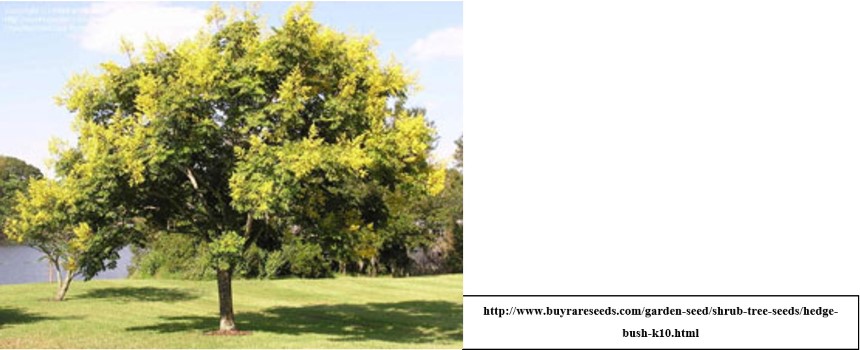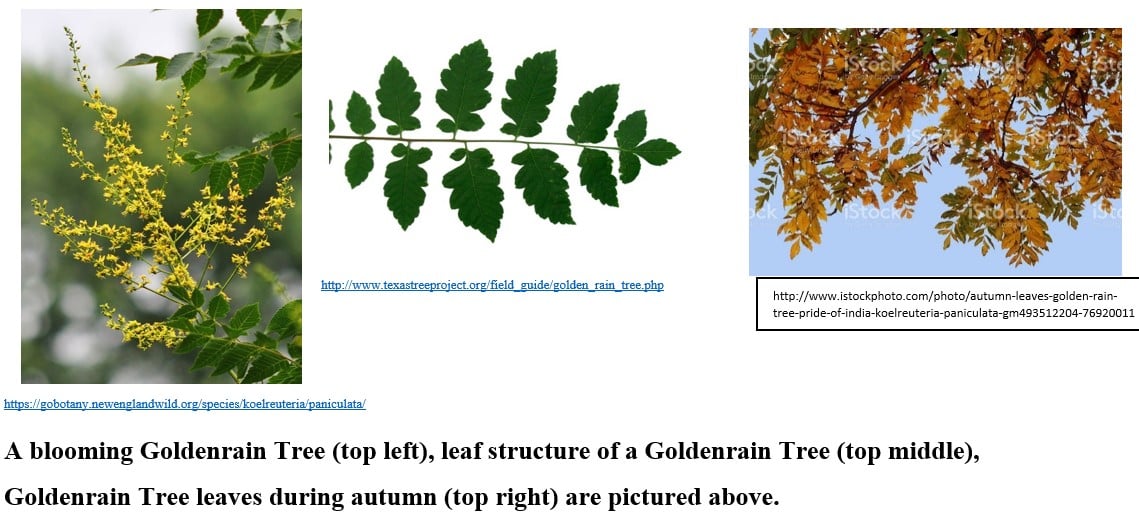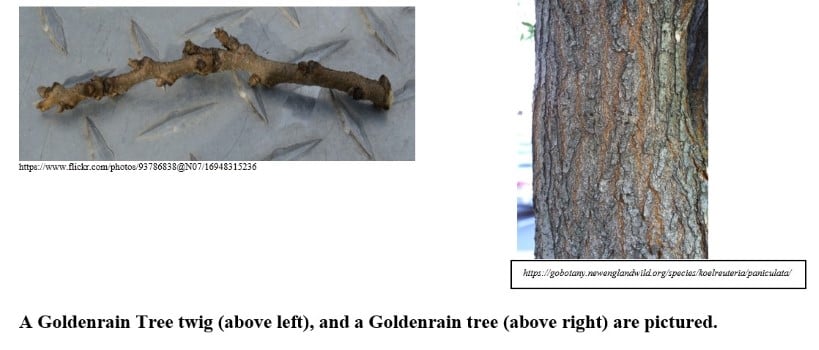University of Redlands Emergency Alert System
Alert Received: . For more information, visit: https://www.redlands.edu/alert/
University of Redlands
- Home
- Trees
- Species Accounts
- Goldenrain Tree
Common name: Goldenrain Tree
Scientific name: Koelreuteria paniculata
Family: Sapindaceae
Identification
Habit: Grows in a rounded shape to be around a height of 30-40 feet tall, and a spread of about 35 feet at maturity.
 Leaves: Alternate, pinnately to bipinnately compound dark green leaves between 6 and 15 inches long. The leaves have 7 to 15 toothed leaflets that are 1-4 inches long.
Leaves: Alternate, pinnately to bipinnately compound dark green leaves between 6 and 15 inches long. The leaves have 7 to 15 toothed leaflets that are 1-4 inches long.
 Twigs and Bark: Light brown twigs are slightly zig-zagged. The twigs have prominent leaf scars along with lenticels, however, do not have a terminal bud. The absence of a terminal bud is one of the distinguishing features of K. paniculata. The Goldenrain tree is usually single trunked, however can be multitrunked as well. The bark on the trunk is a light brown, is ridged, and becomes furrowed with age.
Twigs and Bark: Light brown twigs are slightly zig-zagged. The twigs have prominent leaf scars along with lenticels, however, do not have a terminal bud. The absence of a terminal bud is one of the distinguishing features of K. paniculata. The Goldenrain tree is usually single trunked, however can be multitrunked as well. The bark on the trunk is a light brown, is ridged, and becomes furrowed with age.
 Flowers & Fruits: Flowers are gold colored. Clusters of papery fruits develop, each containing one to three round black seeds. Bee-attracting blossoms are about half an inch across. The blossoms are held upright in clusters on stalks from 12-18 inches long.
Flowers & Fruits: Flowers are gold colored. Clusters of papery fruits develop, each containing one to three round black seeds. Bee-attracting blossoms are about half an inch across. The blossoms are held upright in clusters on stalks from 12-18 inches long.
Where it’s from
Native Range: Native to Asia, specifically in China, Japan, and Korea. If a Goldenrain Tree is to be grown successfully, there are not very challenging conditions that must be met. Thrives most when it is in full sun exposure. Recommended that the tree gets at least six hours of direct unfiltered sunlight each day.
Ecological Notes: The Goldenrain Tree is not very picky when it comes to soil type. The tree grows well in acidic, alkaline, loamy, sandy, well-drained, wet, and clay soils. It is said however, that the soil it grows best in is rich, deep, and well-drained. The tree has a decent amount of drought tolerance, giving it the ability to grow in soils with less water available, and also soils with plenty of water available. The tree is susceptible to only a few diseases that are not very common.
Canker. This causes dead and sunken areas on the bark of the tree. With this disease, pink fruiting bodies will begin to develop on the affected area of the bark. To take care of a Goldenrain Tree with canker, it is best to prune out the tree’s infected branches, and fertilize.
Verticillium wilt. This will cause wilting and death of the leaves on the infected branches. This disease has potential to kill the tree and should be dealt with as soon as possible. There are no known chemical controls for the disease, however, fertilizing to stimulate growth has been shown to help.
What we use it for
Ornamental (for its beauty)
Medicinal herbs: to treat conjunctivitis (pink eye) and epiphora (watering eyes)
In China, the tree was usually planted in order to mark the gravesites of important officials.
References
Biographer
Jacob Schurkman, BIOL 336: Botany, Spring 2017
 © 2017 HalieWestPhotography
© 2017 HalieWestPhotography